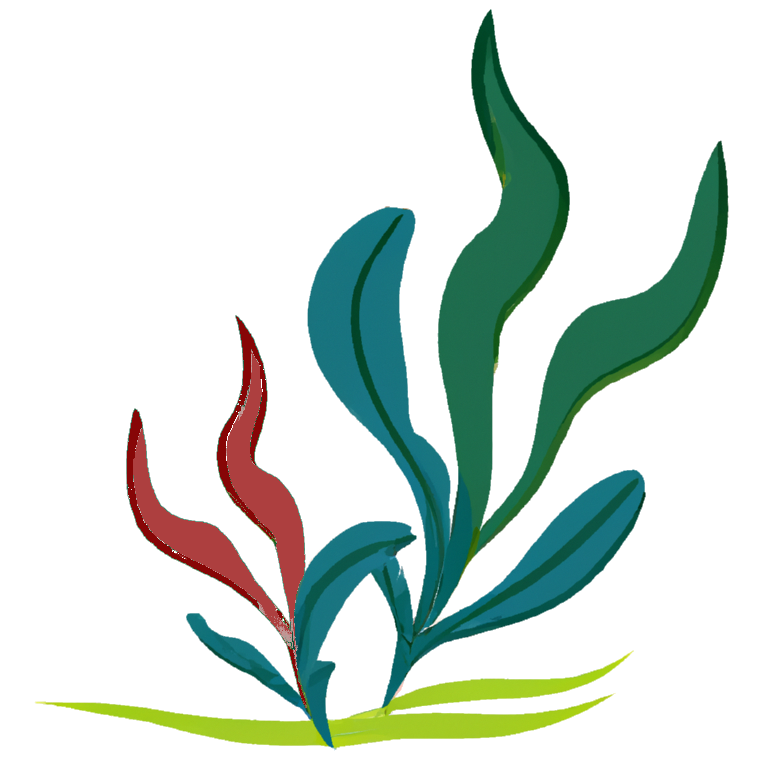Seaweed Explained
“Seaweed” is the name we give to certain marine algae that we often see washed up on the beach. They come in a range of colors and forms, from microscopic ones you can barely see to long, flowing kelps. But these fascinating organisms have more to them than meets the eye! Keep reading to learn about their biological classification and its history.
The Diverse World of Seaweed
- The Greens (Phylum Chlorophyta)
- Taxonomy Connection: They’re part of the Plant Kingdom, making them distant cousins of the plants in your backyard.
- Characteristics: They use chlorophyll, which is like plant sunscreen, to capture sunlight and turn it into food. They store this food as starch – similar to how potatoes do!
- Edible or Not?: Many are good to eat! Think of sea lettuce – a kind of salad from the sea.
- Where They Live: From freshwater ponds to salty oceans, they like a lot of places.
- Famous Member: Sea lettuce (Ulva lactuca), which is not just a snack for fish but for humans too!
- The Browns (Phylum Phaeophyta)
- Taxonomy Connection: They belong to the Kingdom Chromista. Think of them as the mysterious branch of the seaweed family.
- Characteristics: Their brown color comes from a pigment called fucoxanthin – their unique version of a suntan lotion. Instead of storing food as regular starch, they have a special kind called laminarin.
- Edible or Not?: Quite a few are delicious! Kelp, for instance. Just be cautious, as some can absorb unwanted stuff from polluted waters.
- Where They Live: Mostly in cooler waters, forming dense underwater forests.
- Famous Member: Bladderwrack (Fucus vesiculosus), known for its bubbly appearance.
- The Reds (Kingdom Rhodophyta)
- Taxonomy Connection: They have their own unique kingdom, setting them apart in the seaweed world.
- Characteristics: Their range of colors, from pink to deep red, is due to pigments called phycobiliproteins. It’s like their own colorful wardrobe!
- Edible or Not?: Many are tasty! Nori, the wrapper for sushi, is a star here. As always, knowing which ones are safe to munch on is key.
- Where They Live: Everywhere, from warm tropical regions to cooler polar areas.
- Famous Member: Coralline algae, which, despite its name, isn’t coral but can look quite similar.
A Journey Through Seaweed History
In the past, all seaweeds were lumped together as underwater plants. But as we studied them closer, we realized they’re more diverse than we thought. Initially, we grouped them by color – green, brown, red – because that was easy to see. But as science got better, we dug deeper and started classifying them based on their internal features and genetic connections.
In Conclusion
Seaweeds, with their vibrant colors and varied forms, are more than just ornaments of the ocean. They have intricate stories, connections, and characteristics that science helps us understand. So, next time you see a piece of seaweed on the beach, remember: there’s a world of science (and maybe a snack!) in your hands. Dive deeper into their tales right here on our website!
